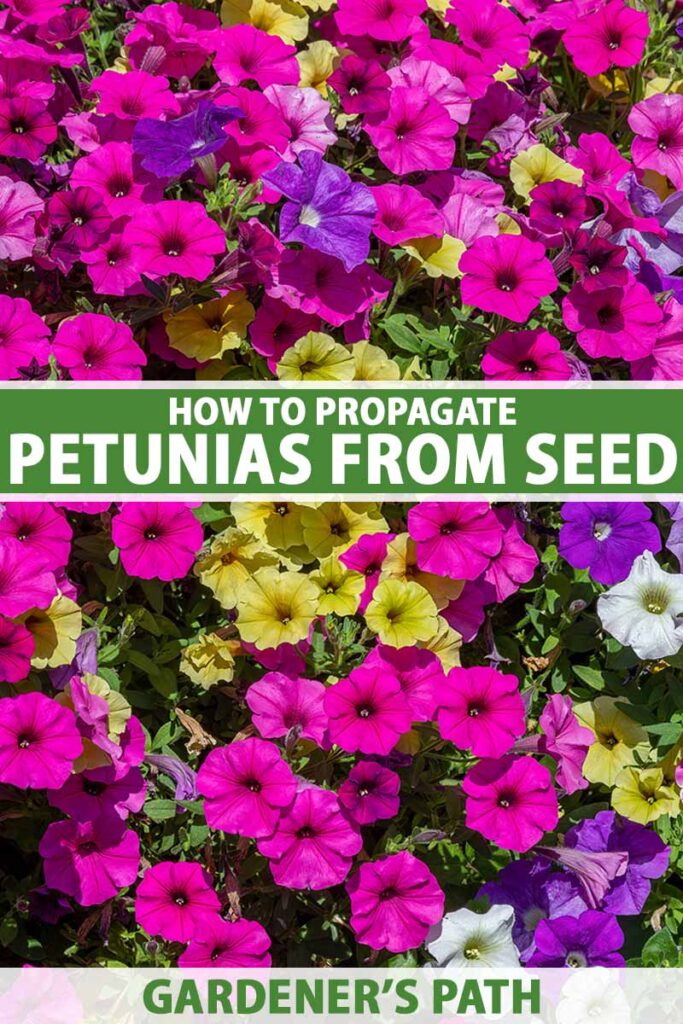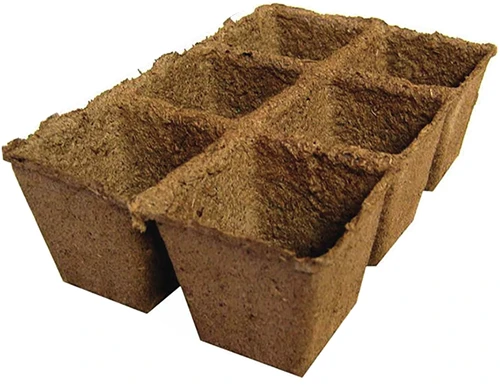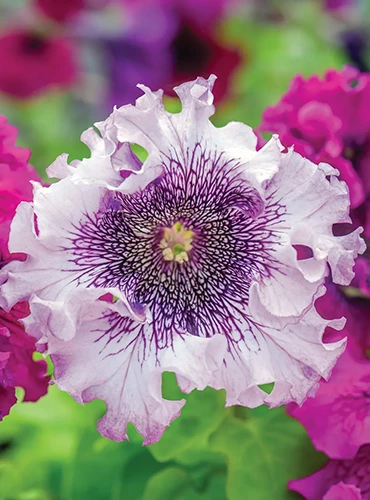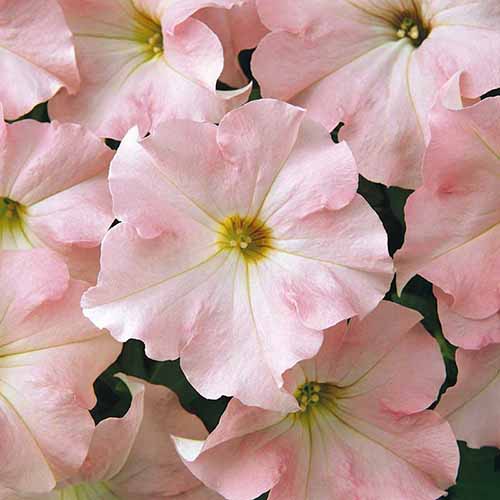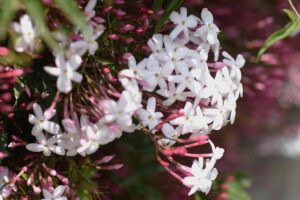Petunias are everywhere. They tumble out of hanging baskets, flank doorways in pots, and fill flower beds across the world.
They bloom all summer long, come in a massive range of colors and flower shapes, and are a cinch to grow, so it’s no wonder people love them.
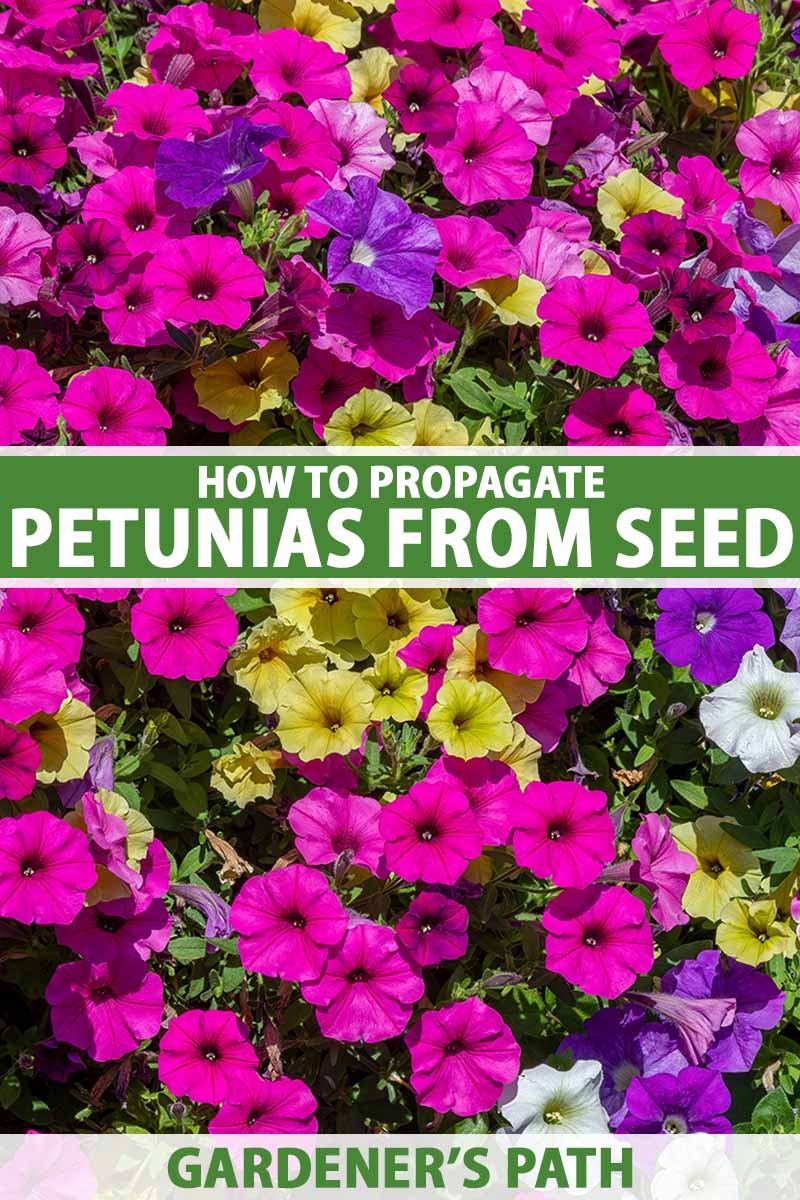
We link to vendors to help you find relevant products. If you buy from one of our links, we may earn a commission.
Sure, you can buy them at nearly any nursery and even many grocery stores in the spring and summer.
But there’s no reason not to propagate plants by sowing seed yourself. It’s cheap, easy, and you can often find hybrids available that you can’t track down as starts from the nursery.
Before we get our hands dirty, here’s the lowdown on what we’ll be discussing:
What You’ll Learn
To understand how to propagate plants, it helps to know where petunias grow in the wild.
They’re from warm regions of South America and they can be cultivated as perennials in USDA Hardiness Zones 9 to 11.
Most gardeners grow them as annuals because the climate in their region isn’t right for petunias year-round.
With that in mind, let’s start our germinating adventures…
Determine When to Start
If you’re going to start petunias from seed, it’s best to start them indoors. They need a long time, over two months, to germinate and mature enough to transplant outside.
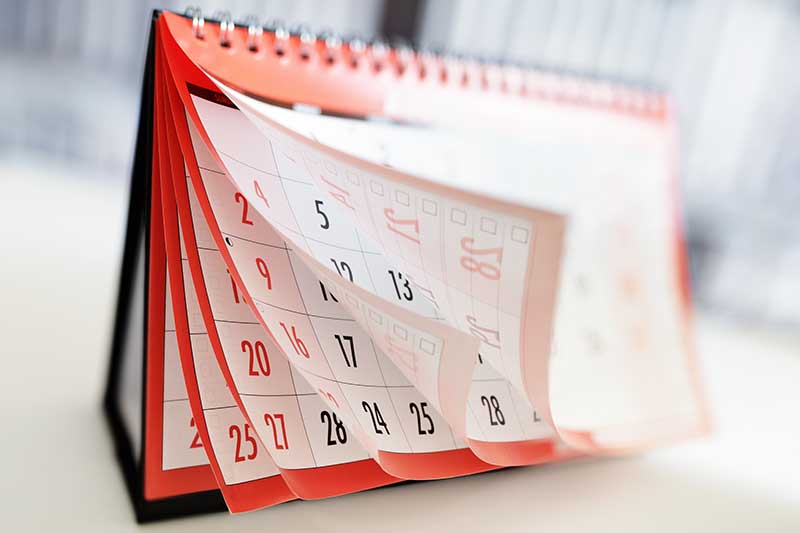
Look at the last predicted frost date in your area and count back 10 or 11 weeks. For most people in North America, that’s going to be in February or March. That’s when you need to sow your seeds.
You can also opt to start the plants outdoors if you live in a region with long, mild springs. So long as there is no chance of frost and the soil temperatures are above 60°F, you can sow in place.
Petunia seeds need about 12 hours of light per day to germinate and seedlings need at least six hours of sunlight per day to grow.
That means you’ll need to wait until about 12 hours of daylight are available before planting. In most areas, this happens well before the last frost date.
Pick the Right Pots
I like to reuse my containers because it reduces waste and it saves me money. If you do the same, just be sure to wash the containers with soap and water or a one-to-nine mix of bleach and water.
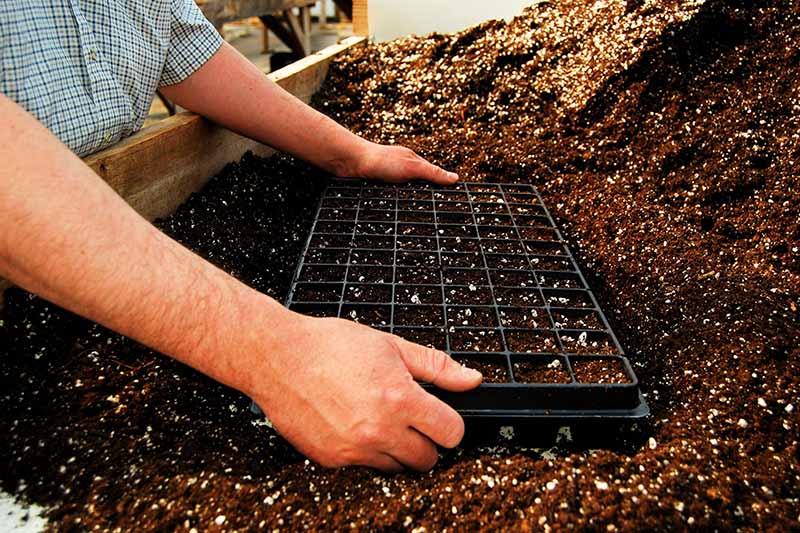
Cell trays are the perfect size. They should have several drainage holes so you don’t run the risk of drowning the roots.
If you aren’t reusing containers, consider buying biodegradable ones. CowPots makes containers out of cow poop, which is a super renewable resource.
Plus, as they dissolve in the soil, they release nutrients to nourish the seedlings. On top of that, they reduce transplant shock. There’s a lot to love about them.
If you want to give them a try, grab a three-, 50-, or 120-pack of six-cell trays at Arbico Organics.
Varieties to Select
I like to look for pelleted seeds, which are easier to handle and sow. The coating also helps the seed retain water.
Regardless of whether you choose pelleted seeds, the choices out there are exciting. You can find hybrids that you never see in stores.
For instance, Spellbound® ‘White Blush’ is a stunner that’s only available from Burpee.
The flowers are huge, with ruffly white petals and striking dark purple veins at the center.
Dreams™ ‘Appleblossom’ has peachy pink three-inch flowers that resemble huge apple blossoms.
You can get a packet of seeds of this lovely hybrid at Eden Brothers.
Superbissima ‘Giant Rose’ is a real stunner. It has massive blossoms that can be seven inches across.
The fragrant petals, which are a deep rose color with purple veins, smell and taste like cherry. Despite the large flowers, this plant stays fairly compact and it grows happily in containers.
Sow the Seeds
Whether you propagate indoors or out, you need a good medium to start the seeds in.
With pots, it’s much easier to control the soil than it is for anyone planting directly in the ground. Just fill the cell trays with a high-quality seed-starting mix and water it well to moisten the medium.
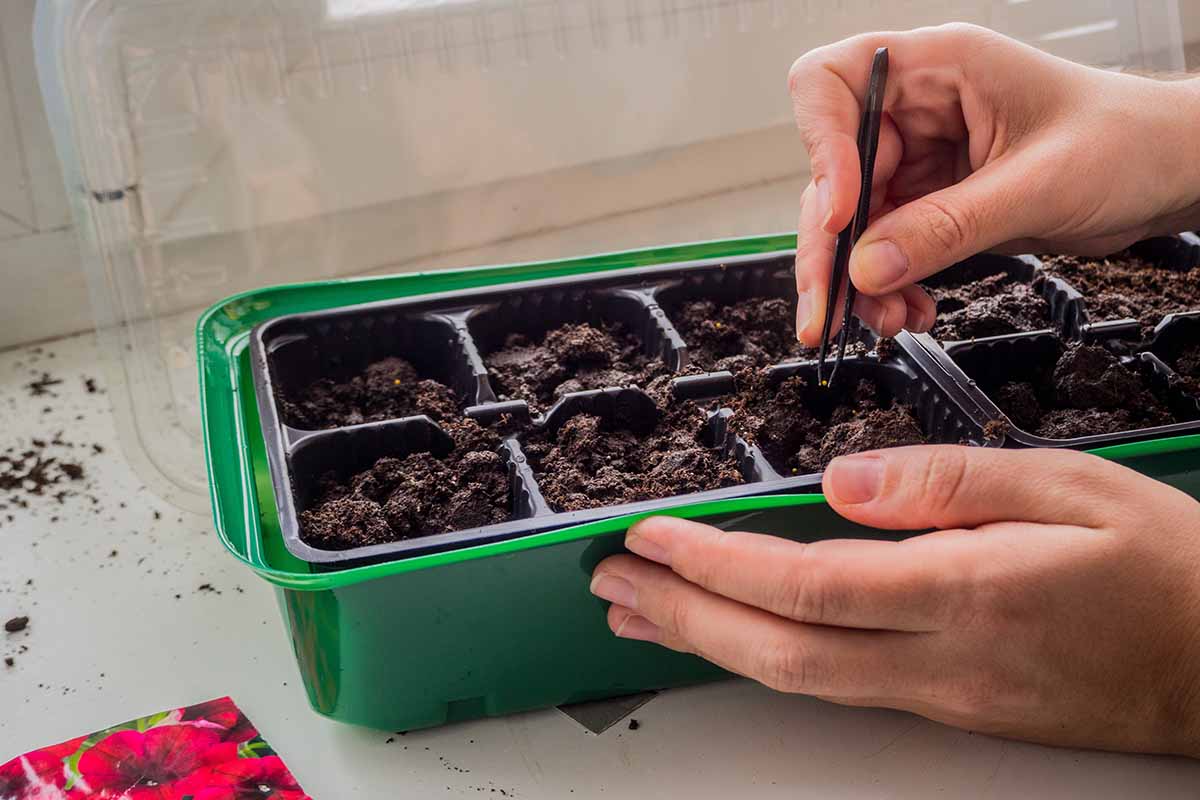
Outdoors, loosen up the soil to about six inches deep, and work in lots of well-rotted compost.
It doesn’t matter if your soil leans sandier or more clayey – well-rotted compost will help balance it.
And even if you have the perfect soil, compost will add nutrients. Also, if you have perfect soil, when can I move in?
Press them into the surface of the soil. You should sow one or two seeds per cell. Space them according to mature dimensions outdoors depending on the variety you are growing.
Watch the Temperature
Petunia seeds don’t like temperature fluctuations. There are things you can do to help regulate the temperature if you’re propagating indoors, but outside, you’re more subject to the whims of nature.
If you have a cold frame, you can use it to start seeds in pots and better regulate the temperature.
However you do it, try to keep it around 60 to 75°F. You can do this by placing the pots on a heat mat and placing plastic or glass over the containers.
Petunia seedlings don’t need high humidity, but the glass or plastic will help maintain consistent temperatures.
If you’re using a cold frame, open it on hot days and close it up tight on cold days.
Provide Light
Petunia seeds need light to germinate, and you probably won’t be able to give them enough just by placing the pots in a window.
They need about 12 hours of light per day to encourage germination. Most of us will have to put the seeds under a grow light.
Make sure the grow light isn’t more than four or five inches above the soil surface. The seeds won’t germinate without bright light.
If you’re propagating outside, make sure the seeds are in an area with full sun. Eight hours of sunlight is the minimum.
That means you might need to start your seeds indoors even if you have mild temperatures, simply because there isn’t enough light in many parts of the Northern Hemisphere during the early spring.
Water, Water, Water
Mature petunias need a lot of water and so do the seedlings. Keep the planting medium moist at all times, whether that’s inside or outside.
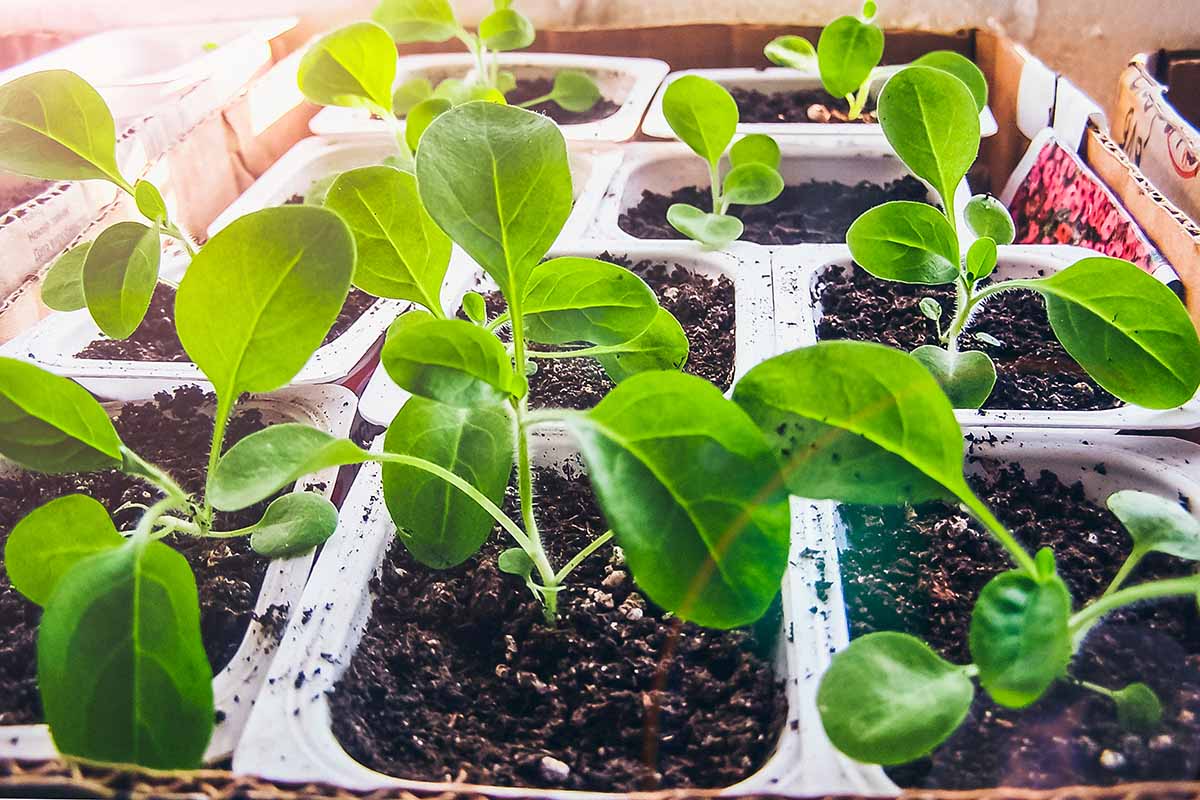
“Moist” is kind of a vague term, so let’s clarify a bit – if you imagine the moisture level of a kitchen sponge that you’ve soaked in water and then wrung out really well, that’s the level you’re aiming for.
Obviously, when you first water the medium will be a bit wetter, and as it starts to dry, the soil will feel drier than that. But your goal should be to try and maintain that level of moisture.
This can mean watering as often as once a day at times, and you should continue to keep the soil that moist until the seedlings are a few inches tall.
After that you can relax a little, but the soil should optimally stay that moist throughout the plants’ lives.
Transplant
If you sowed straight in the ground outdoors, go ahead and skip this section and proceed directly to enjoying your plants.
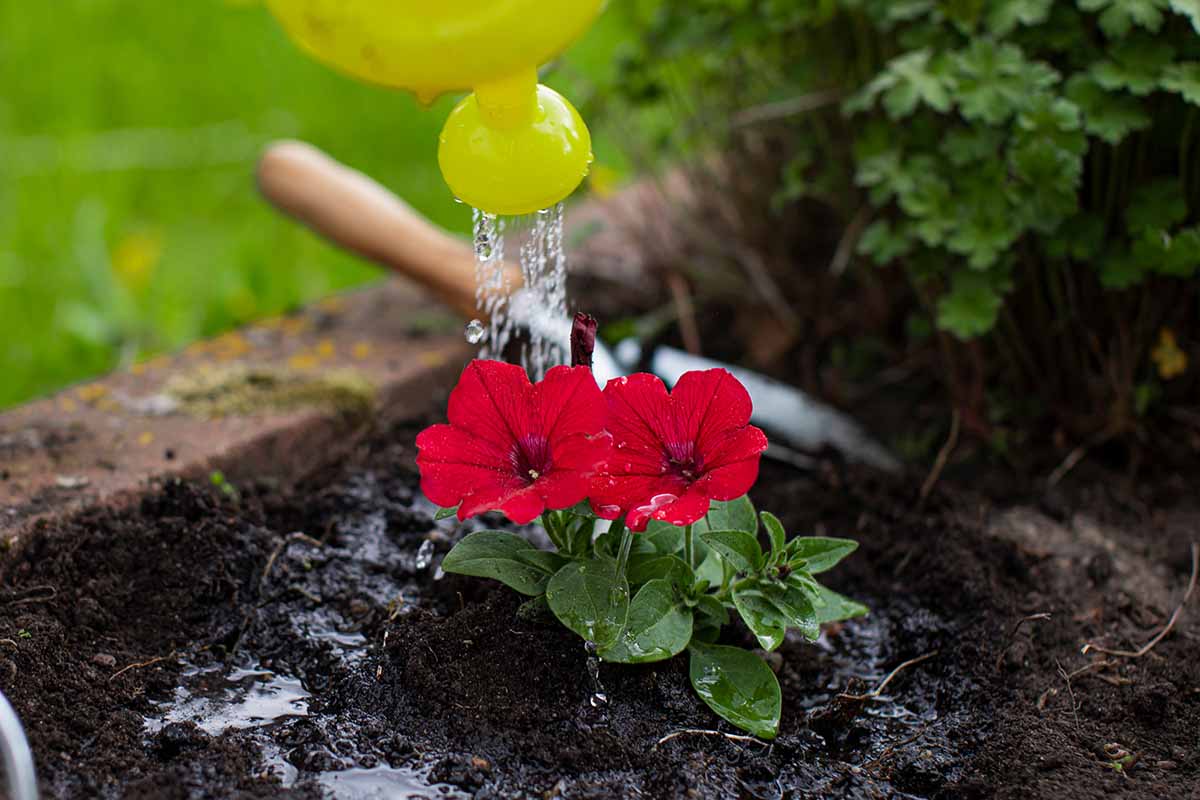
Otherwise, it’s time to harden off your seedlings once the last frost is past and the plants have at least three true leaves.
At that point, set them outside in a place that is protected from drying wind, but in full sun. Leave the seedlings there for an hour and then take them back inside.
The next day, leave the seedlings out for two hours. Add an hour per day until the seedlings can be exposed to outdoor conditions for a full eight hours.
While your plants are undergoing this process, you can prep the planting area. Loosen up the soil and mix in well-rotted compost as described above for direct-sown plantings.
After your seedlings have been hardened off, they’re ready to transplant. Make holes the size of your containers. Biodegradable containers can be placed directly in the holes, otherwise you will need to remove the seedling from their containers one by one.
Spacing depends entirely on the type of petunia you’re growing. The larger grandifloras or ground cover types should be about a foot apart. Smaller plants can be as close as six inches.
Firm up the soil around each plant and water well.
You Should Plant More Petunias
Starting plants from seed is so satisfying. Sure, you could go to the store and buy a flat of the same petunias that all your neighbors will be growing.
Or you could plant some seeds that will truly stand out – and save a few bucks in the process.
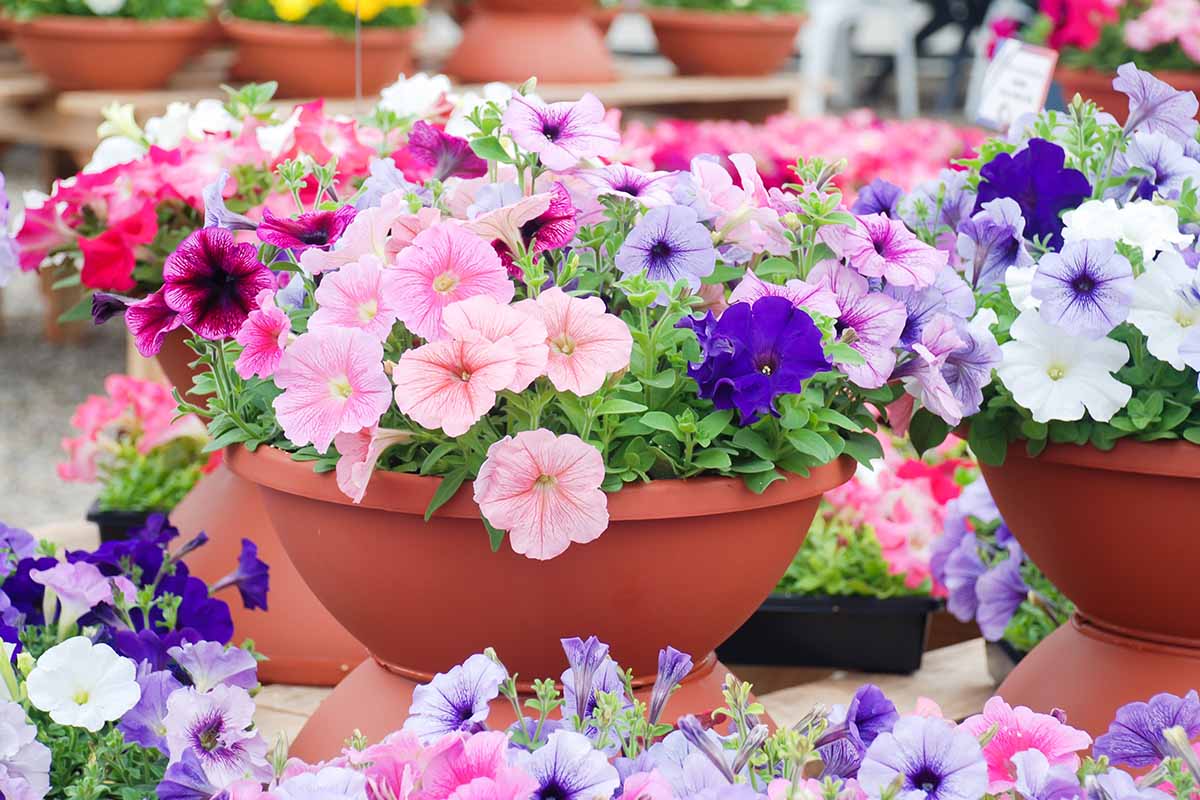
Now, tell me all the details about what varieties you’ll be growing. Do you have a specific one in mind? Or do you plan to head to your local nursery and see what they’re offering?
Reach out in the comments below, and feel free to share your photos as well!
Want to dive even deeper into the delights of growing petunias? We have some more guides that are worth checking out, including:
